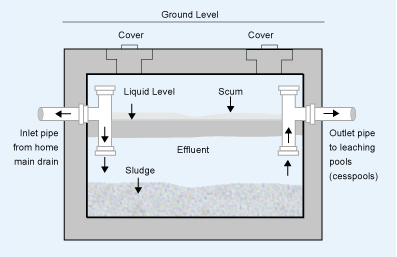|
Contact Us: 631-888-0071 |
Septics 101Source: Long Island Liquid Waste Association (L.I.L.W.A.)Understanding Your Septic SystemDo's and Don'tsDo
Doníts
What is a Septic System? Septic systems have been installed since the late 1800ís
replacing the old outsite facility commonly known as the
outhouse.
Septic systems have been installed since the late 1800ís
replacing the old outsite facility commonly known as the
outhouse.A septic system on Long Island usually consists of a primary receiver (septic tank) and a drainage area (cesspool or drainage field). Homes constructed after 1972 will have a septic tank as the primary receiver. Some homes built prior to 1972 will have a cesspool as a primary receiver. Most homes have a septic tank serving as the primary receiver and a cesspool or multiple cesspools serving as the drainage area. If properly installed and maintained on a regular basis, your septic system will provide many years of trouble free use. How Do Septic Systems Work?Waste water leaves your home through a pipeline called the main line, then enters the septic tank (primary receiver). The septic tank holds the waste for primary treatment where solids and liquids are separated by gravity. The heavy digested solids called sludge accumulate at the bottom of the tank. The lighter materials (grease and oils) are called a scum layer |
|
SERVICES INCLUDE:
|





